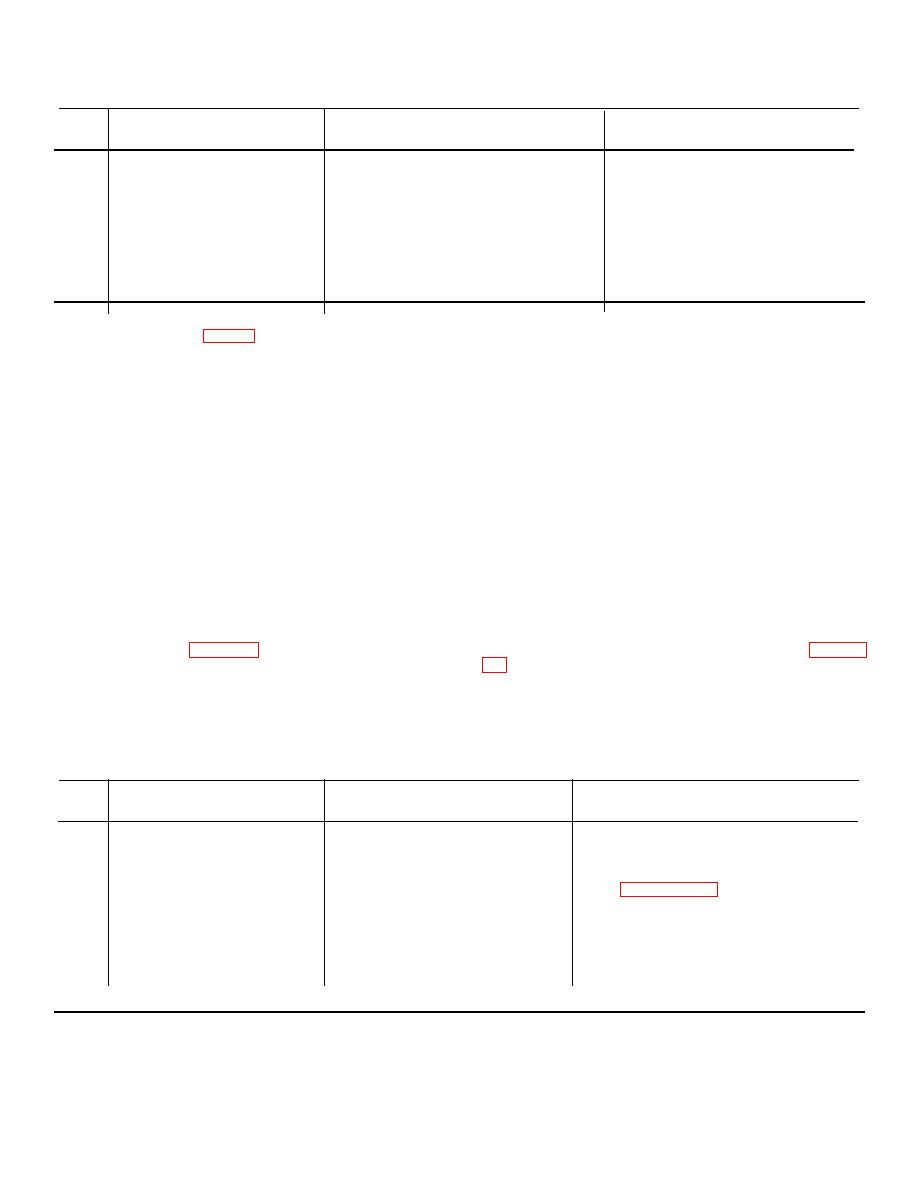
TM 11-6625-2440-12
4-12. Quarterly Preventive Maintenance Checks and Services Chart
Seq
Symptom
Probable Cause
Corrective action
No.
1
Publications ...................................... Check that all publications are complete,
DA Pam 310-4.
serviceable, and current.
2
Modifications..................................... Check to see if new applicable MWO's
DA Pam 310-7
have been published.
All Urgent MWO's must be applied imme-
diately. Normal MWO's must be scheduled.
3
Spare parts ....................................... Check all spare parts for general condition
TM 11-6625-2440-20P.
and method of storage. There should be
no over-stock and shortages must be on
requisition.
a. Remove moisture and loose dirt with a clean
4-13.
Cleaning
WARNING
cloth.
b. Remove grease, fungus, and ground-in dirt
The fumes of trichloroethane are toxic.
Provide thorough ventilation whenever used;
with isopropyl alcohol.
c. Clean unpainted surfaces with trichloroethane.
DO NOT use near an open flame.
d. Remove dirt from hard-to-reach areas with a
Trichloroethane is not flammable, but
exposure of the fumes to an open flame
brush.
converts the fumes to highly toxic, dangerous
gases.
4-14.
Touchup Painting Instructions
CAUTION
Remove rust and corrosion from metal surfaces by lightly
Do not use trichloroethane on any painted or silk-
sanding with fine sandpaper, (FSN 5350-235-0124).
screened surface of the test set. Clean the front panel
Brush two thin coats of paint (FSN 8010-817-1213), on
and control knobs with a soft, clean cloth. If dirt is
the bare metal to protect from further corrosion. Refer to
difficult to remove, dampen the cloth with water and use
applicable cleaning and refinishing practices specified in
a mild soap. Clean exterior metal surfaces as follows:
TB 746-10.
Section III. TROUBLESHOOTING
4-15.
General Troubleshooting Information
abnormal indication or result is observed. When an
abnormal indication or result is observed, note the
Troubleshooting of this equipment is based upon the
sequence number and turn to the corresponding
self-test procedure (para 3-6). The self-test should be
sequence number in the troubleshooting chart (para 4-
performed after installation, monthly when in continuous
use, before each platform test when used intermittently,
troubleshooting chart. If the corrective actions indicated
or when the test set operational status is questionable.
do not result in correction of the trouble, a higher
Proceed through the tests in the self-test chart until an
category of maintenance is required.
4-16. Troubleshooting Chart
Seq
Symptom
Probable Cause
Remedial Action
No.
Note. Replacement of power supplies and
circuit cards requires removal of the
chaa,is from the combination case. Refer
1
Blower does not operate
Blower faulty
Refer to higher category of maintenance.
2
a. Voltage indicated for PLAT-
a. Circuit card 2A1A17 faulty
a. Replace circuit card 2AlA17 ( para 4-
FORM SCAN switch position
21).
1, 2, or 3 is 0 v.
4-3


 Previous Page
Previous Page
